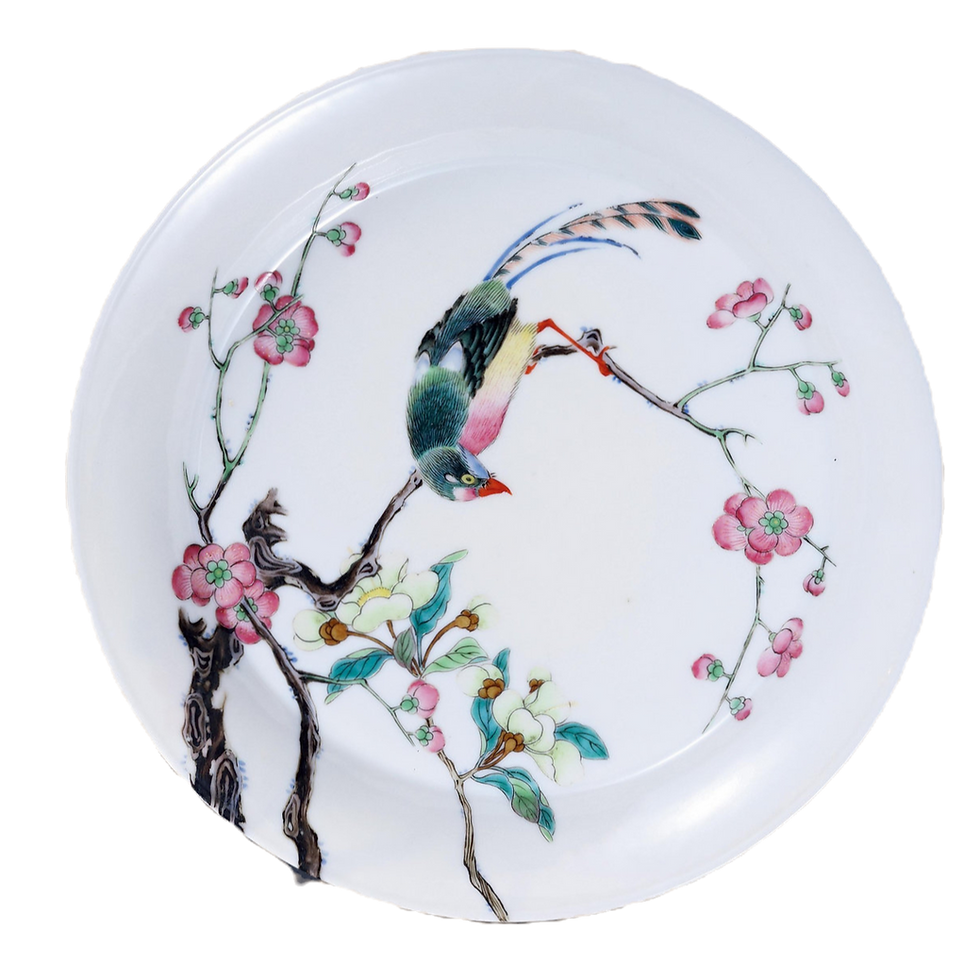The Twenty-Euro "Ashtray"
- Philippe Smolarski
- Apr 23
- 2 min read
At Moon Rabbit Art, our Paris appraisal office often receives messages from people who are curious about the value of items they’ve found or inherited. While many of these objects turn out to be of modest worth, every now and then, something truly special comes our way.
Not long ago, we received an email with the subject line: “Is it good only for the garbage box?” It was from Karim, a construction worker, who had attached several blurry photos of what he described as “maybe an old ashtray or bowl thing.” He’d discovered the piece while clearing out a basement at a demolition site in Levallois-Perret, where an old building was being taken down to make room for new construction.
Even though the photos weren’t very clear, I noticed some distinctive features—especially the pale bluish-green glaze and the cylindrical shape with horizontal ribbed decoration, which are typical of certain Chinese ceramics. I reached out to Karim right away, asking if he could send clearer photos, particularly of the base and any markings. When he asked if it might be worth “20 or 30 euros,” I explained that it definitely wasn’t an ashtray, but I needed better images before I could say more.
When the new photos arrived, they confirmed my initial thoughts, but also traces of cigarette ash marks along the rim. Karim had actually been using this ancient piece as an ashtray at home.
After a careful look, I identified the object as a Longquan celadon tripod incense burner from the Song Dynasty (960–1279 AD). Its cylindrical body with ribbed decoration, three short legs, wide rim, and smooth, glossy glaze all pointed to its origins and intended use.
When I called Karim to share what I’d found, he was skeptical at first. But as I explained that such pieces are typically valued between 2,000 and 3,000 euros, he was genuinely surprised. He mentioned his girlfriend found the piece ugly in their home.
After authentication, we were able to connect Karim with a collector who purchased it for 2,400 euros.
Karim and his girlfriend used the unexpected windfall for a weekend trip to Tunis. More importantly, the experience gave them a new appreciation for historical artifacts and the hidden value that everyday objects can sometimes hold.
Stories like this are a reminder of why we at Moon Rabbit Art encourage people to have items professionally evaluated before discarding them or putting them to new uses. Historical artifacts deserve to be properly identified and cared for—because sometimes, what seems like just an old bowl is actually a meaningful link to our shared human history.




Comments